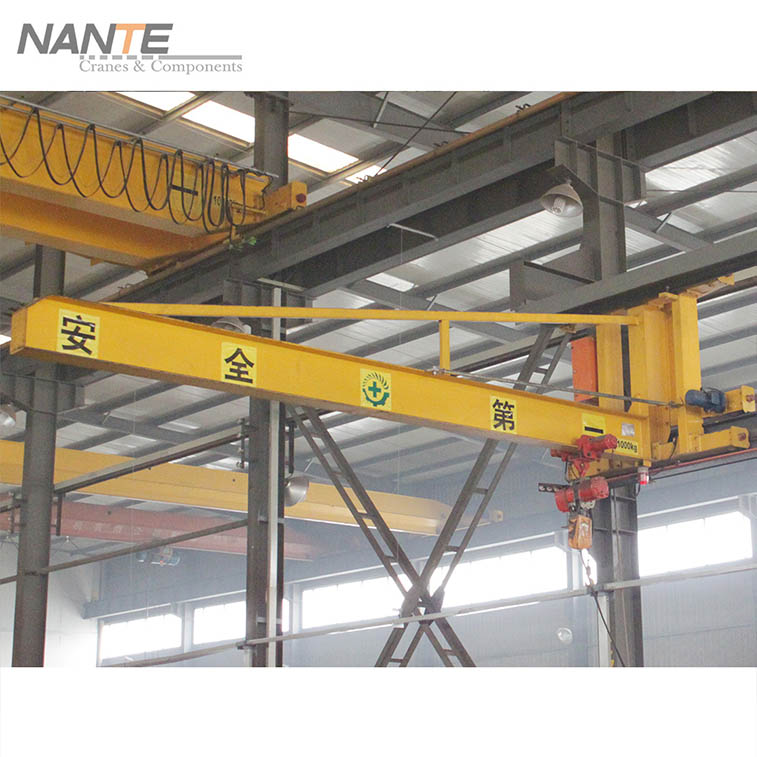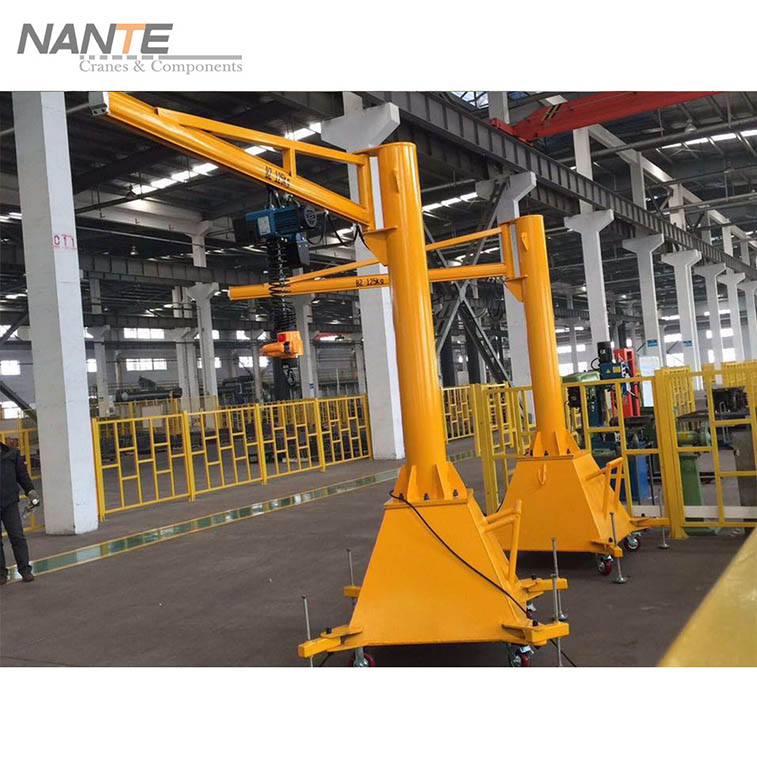How to Choose a Jib Crane?
Date: 2024-02-09 Share:
Importance of a Jib Crane
A Jib crane is a kind of mechanical equipment used for lifting and handling goods, mainly used for loading, unloading and handling goods in the fields of equipment manufacturing, paper making, energy and electricity, automobile shipbuilding, metal processing, aerospace and so on.

The jib crane can quickly and accurately move goods from one location to another, greatly reducing the time and labor intensity of manual handling. It adopts a jib design, which can complete lifting operations in multiple directions in a limited space, thus saving space in the workplace. Moreover, the jib crane adopts the mechanical lifting method, which is easy to operate, stable and reliable, and can avoid the safety hazards in the process of manual handling and improve the safety of operation. In addition, jib cranes can be used in construction, harbors, factories, mines and other various places and industries, and can meet the lifting operations of different work requirements. Jib cranes can also reduce labor costs, and reduce the time and labor intensity required for manual handling, thus improving efficiency and reducing costs.
In general, jib cranes are a kind of efficient, safe, flexible, energy-saving lifting equipment, widely used in various industrial fields, and are one of the important tools of modern production.

Factors to Consider When Choosing a Jib Crane
Jib cranes are important material handling equipment used in a wide variety of industrial and commercial environments. When choosing a jib crane, there are a number of key aspects to consider to ensure that the equipment you select meets your specific needs and excels in terms of safety, efficiency and durability.
The first point is load capacity:
Load capacity is the maximum weight that a crane can safely lift.
First, you need to specify the maximum weight of the material or equipment being lifted. Then, refer to the specification sheet of the jib crane to ensure that the indicated load capacity is greater than or equal to your required lifting capacity. However, the weight may expand or change in the future, so you can choose a slightly larger load capacity. Also, it is important to note that the load capacity of a crane may vary under different operating conditions. For example, the load capacity when the jib is fully extended is usually less than in the contracted state. Taking this into account, it is best to clarify the specific working conditions beforehand.
The second point is the extension distance and span:
Reach refers to the maximum length that a cantilever can extend horizontally, while span involves the distance between multiple cantilevers or bridges.
Firstly, measure your work area to ensure that the crane’s reach and span will cover the entire area. Consider the ability of the cantilever to extend at different angles and heights, and how these variations affect the load-bearing capacity. Ensure that the selected crane can not only cover the current work area, but also accommodate possible future expansion.
The third point is the mounting options:
This refers to how and where the crane will be fixed, including floor-mounted, wall-mounted, ceiling-suspended or mounted on an existing structure.
The workplace should first be assessed to determine the most suitable installation location. Stability, ease of operation and safety should be considered. Ensure that the chosen mounting method meets the constraints of the work environment while providing an optimal operating experience.
The fourth point is the hoisting mechanism:
The hoisting mechanism is the part of the crane that is used to lift and lower the load, such as an electric hoist, pneumatic hoist or manual hoist.
Select the appropriate hoisting mechanism according to the application requirements. Consideration should be given to raising speed, control accuracy, power requirements and ease of operation. Ensure that the chosen hoisting mechanism is compatible with the rest of the crane and will meet the requirements of your job. Also, consider potential technology upgrades and ease of future maintenance.
The fifth point is durability and maintenance:
Durability refers to the crane’s longevity and resistance to wear and corrosion, while maintenance refers to the various activities that keep the crane in good operating condition.
We recommend that you choose a jib crane made from quality materials and check its corrosion and abrasion resistance. You should also be aware of the crane’s maintenance requirements, which include regular inspections, lubrication, cleaning and replacement of worn parts. Ensure that replacement parts and maintenance services are easily accessible for your chosen brand and model. Consider signing a long-term maintenance contract with your supplier if you wish to use your jib crane consistently and steadily.
The sixth point is safety features and compliance:
Safety features refer to the devices and functions that the crane is equipped with to ensure safe operation, while compliance refers to whether the crane meets the relevant safety standards and regulatory requirements.
It should be ensured that the crane has the necessary safety features such as overload protection, limit switches, emergency stop buttons, etc. Check whether the crane complies with local and international safety standards and obtain the appropriate certification and compliance documents. If your working environment has special safety requirements or regulatory restrictions, make sure that the selected crane can meet these requirements.
In conclusion, choosing the right jib crane is vital to a business’s operations. By carefully assessing requirements and budgets, and considering factors such as the working environment, control methods, safety features and maintenance, businesses can ensure that they select the best jib crane for their needs. This choice not only improves efficiency and reduces work risks, but also saves space and reduces maintenance costs. In addition, jib cranes are highly adaptable and can flexibly respond to different workplaces and lifting needs. In short, choosing the right jib crane will bring multiple benefits to your organization, including improving economic efficiency, enhancing competitiveness and promoting sustainable development.
 English
English






